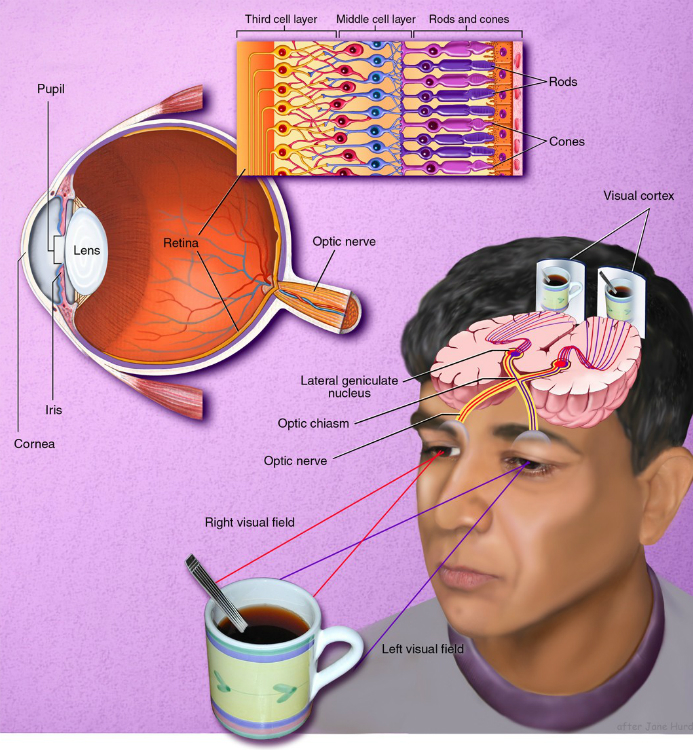I'm not sure what you are after. It sounds like you want to be able to measure a neuronal correlate for the afterimage you experience when you wave your hand. Is that close?
I also do not understand exactly what is meant by "pulse response arrays". I did search and saw a bunch of hits - radar and other things and I just don't have a good feel for that. Pulse propagation networks is a very old neural network model/concept
https://www.brainfacts.org/thinking-sensing-and-behaving/vision/2012/vision-processing-information that I vaguely recall.
I admire your willingness to think about the issues and to ask questions, but there is a lot of background to understand before you can, even mentally, devise experiments that would make sense. Here is the deal bluntly and I really hope you are not offended because I mean no offense.
I feel like I have been down this road many times with many "EEs". That may be unfair stereotyping on my part, but the typical EE curricula for a 4 year degree likely does not include much physiology, sensation and perception, learning theory, or general neurobiology or neuroscience. Yet all of that is terribly important to having a foundation to even grasp at a speculation. To be sure, I have known some very sharp biomedical engineers with advanced degrees and who have studied these topics in depth - it is not out of the realm of engineers (or anybody else), I am not saying that at all. I am saying that it is specialized and it is complicated and it looks like we don't yet know as much as we don't know.
I have been annoyed for years that a group co-opted neuronal terminology and have given us the new and improved "deep learning" (aka classifying things). I know something about neurons, not everything, but something about them, and I say that those
ain't neurons and I don't see the value in sharing the terminology to suggest that they are neurons. I may be a bit biased

A typical (and terribly frustrating) level of understanding of how we "see" starts and functionally stops, at light hitting the retina. I am telling you that you do not need any light hitting a retina to report "seeing". This has been demonstrated often. You "see" while dreaming but your eyes are closed. Some musicians "see" the color of music - no relevant retinal information is needed. Hallucinogenic drugs are named as such for a reason. I promise you that I (well someone) could stick some electrodes in your brain and get you to "see".
Look at the typical mickey-mouse diagram of the visual system: [https://www.brainfacts.org/thinking-sensing-and-behaving/vision/2012/vision-processing-information]

Where do you think "seeing" is located in that diagram?
In fact, I would argue that no two people could EVER see the same thing - it is impossible because 1) they can't occupy the same space and 2), which is much more important, no two people have exactly the same genetic+developmental+experiential makeup that could possibly lead to an identically functioning visual cortex (and other parts). One typical problem is that folks want to concentrate on the transducer (eye) because it is so much simpler than the rest, but that does not mean that the retina is the most important part.
I saw this the other day (I can't remember where or I would give the cite, my apologies to the author) and, apart from ignoring the inconvenient bit about "all things being equal", I thought it was so funny that I saved a copy.

So, I probably can't be of much help because I don't understand what you trying to do, but again, no offense intended. Hopefully, I have been, at least, mildly entertaining
